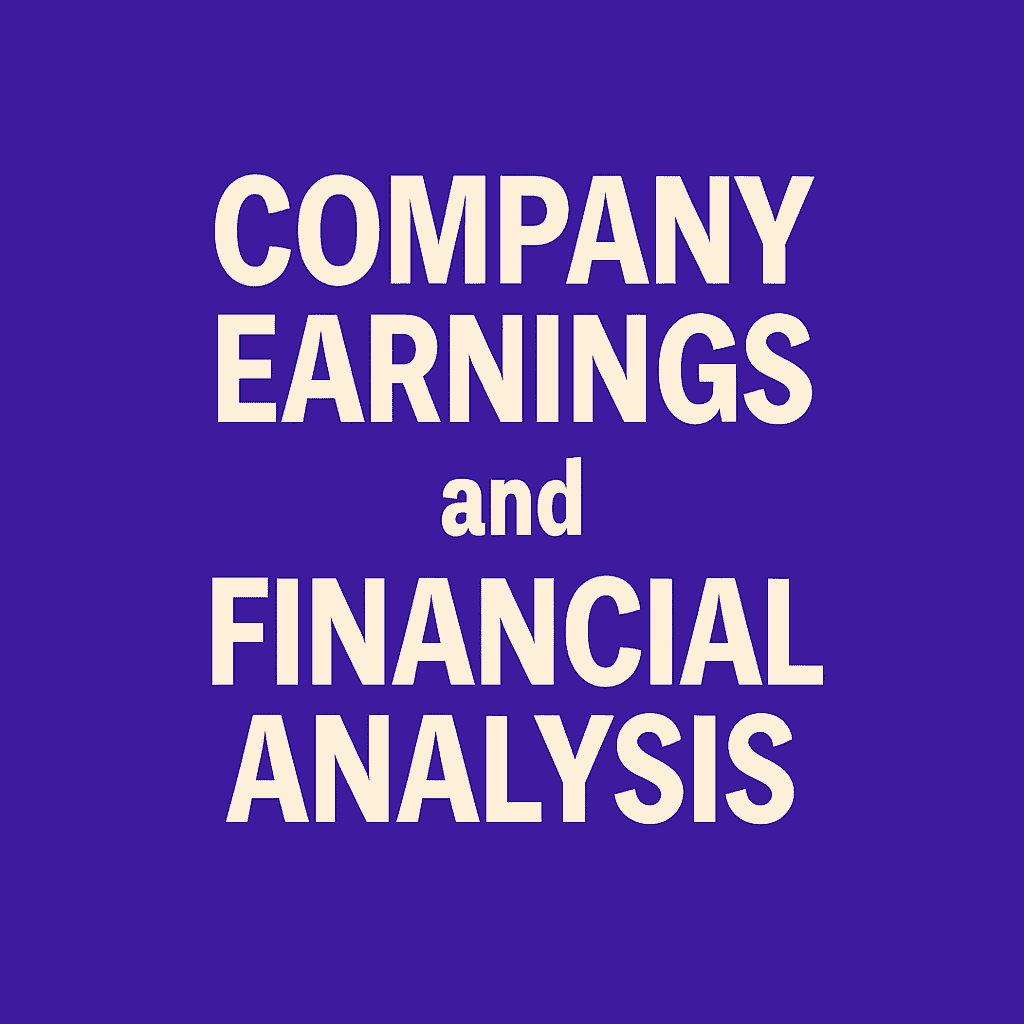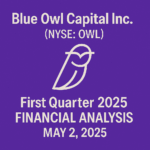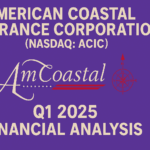Brookfield Corporation (NYSE: BN, TSX: BN)
Q1 2025 Financial Analysis | May 8, 2025
Executive Summary
Brookfield Corporation reported strong financial results for Q1 2025, with distributable earnings increasing by 27% to $1.5 billion ($0.98 per share) compared to the prior year. The company achieved a 30% increase in distributable earnings before realizations to $1.3 billion ($0.82 per share), supported by continued momentum across core operations. The asset management business saw strong inflows of $25 billion during the first quarter, while operating businesses continued to generate resilient cash flows, and the wealth solutions business delivered robust growth. Amid increased market volatility, Brookfield has accelerated share repurchases, buying back $850 million of shares so far in 2025, and has increased its deployable capital to a record $165 billion.
Q1 2025 Highlights
Financial Performance
Brookfield Corporation's Q1 2025 financial results demonstrated continued strong performance, with distributable earnings increasing by 27% to $1.5 billion ($0.98 per share) compared to the prior year quarter. Distributable earnings before realizations grew by 30% to $1.3 billion ($0.82 per share), reflecting the robust operational performance across the company's business segments.
Total consolidated net income was $215 million for the quarter, down from $519 million in the prior year period. Net income attributable to Brookfield shareholders was $73 million, compared to $102 million in Q1 2024. Despite the decline in net income, the company's operational performance remained strong, as evidenced by the significant growth in distributable earnings.
The asset management business demonstrated exceptional performance, with fee-related earnings reaching a record $698 million, representing growth of 26% compared to the prior year quarter. This growth was driven by a 20% increase in fee-bearing capital over the last twelve months to $549 billion, with total inflows of $25 billion in the quarter. The company successfully closed its flagship opportunistic credit fund strategy at $16 billion and finalized the institutional close for its fifth vintage opportunistic real estate strategy.
Earnings from realizations during the quarter were $248 million, reflecting successful asset sales across the business. The company closed approximately $22 billion of asset sales during the quarter, with substantially all sales completed at prices in line or above carrying values. Total accumulated unrealized carried interest stood at $11.6 billion at quarter end, representing an increase of 14% compared to the prior year.
The Board declared a quarterly dividend for Brookfield Corporation of $0.09 per share, payable on June 30, 2025, to shareholders of record as at the close of business on June 13, 2025. The company's share repurchase program remained active, with $850 million of shares repurchased so far in 2025 at prices significantly lower than the company's intrinsic value.
Business Segment Performance
| Business Segment | DE Q1 2025 ($M) | DE Q1 2024 ($M) | YoY Change | Key Developments |
|---|---|---|---|---|
| Asset Management | 684 | 621 | +10% | Fee-bearing capital up 20% to $549B |
| Wealth Solutions | 430 | 273 | +58% | Insurance assets increased to $133B |
| Renewable Power (BEP) | 113 | 107 | +6% | Strong operating earnings |
| Infrastructure (BIP) | 89 | 84 | +6% | Resilient cash flows |
| Private Equity (BBU) | 6 | 9 | -33% | Ongoing strategic initiatives |
| Real Estate (BPG) | 215 | 166 | +30% | Same-store NOI up 3% YoY |
Asset Management distributable earnings were $684 million ($0.43 per share) in the quarter, representing a 10% increase from the prior year period. Fee-related earnings reached a record $698 million, growing 26% compared to Q1 2024. This growth was driven by a significant increase in fee-bearing capital, which grew 20% over the last twelve months to $549 billion. The business saw strong inflows of $25 billion during the quarter, including the successful closing of the flagship opportunistic credit fund strategy at $16 billion and the institutional close for the fifth vintage opportunistic real estate strategy.
Wealth Solutions delivered exceptional performance with distributable earnings of $430 million ($0.27 per share), a 58% increase from the prior year. The business originated $4 billion of retail and institutional annuity sales during the quarter, increasing insurance assets to $133 billion at quarter end. The business maintains a strong financial position, with statutory capital growing to over $16 billion. The company continues to gradually rotate the investment portfolio, contributing to an average investment portfolio yield of 5.7%, which is 1.8% higher than the average cost of funds, maintaining a 15% return on the $11.5 billion invested capital.
Operating Businesses generated combined distributable earnings of $426 million ($0.27 per share), a 26% increase from $337 million in Q1 2024. Cash distributions from operating businesses are underpinned by strong operating earnings across renewable power and transition, infrastructure, and private equity businesses. The core real estate portfolio delivered a 3% increase in same-store NOI over the prior year quarter. In the real estate business, the company signed nearly 9 million square feet of office and retail leases during the quarter, including 2.3 million square feet of office leases in the U.S. The North American residential business generated approximately $640 million of proceeds from the sale of master plan communities as the company shifts the business to a more capital-light model.
Overall, the strong performance across all business segments underscores the resilience and diversification of Brookfield's business model, with distributable earnings before realizations increasing by 30% year-over-year to $1.3 billion. The company continues to benefit from its global scale, strong market positions, and ability to deploy capital effectively across different asset classes and regions.
Capital Position & Liquidity
Brookfield ended the quarter with a record $165 billion of capital available to deploy into new investments, demonstrating the company's exceptional financial strength and flexibility. This includes:
- Deployable Capital: $165 billion, which includes $69 billion of cash, financial assets, and undrawn credit lines at the Corporation, its affiliates, and wealth solutions business
- Balance Sheet Strength: Corporate debt at the Corporation has a weighted-average term of 15 years, with no maturities through the end of 2025
- Capital Markets Access: Maintained strong access to capital markets and executed over $30 billion of financings, including issuing $500 million of 30-year senior unsecured notes at the Corporation, achieving the tightest 30-year spread to date
- Share Repurchases: Completed $850 million of share repurchases to date in 2025 at prices significantly lower than intrinsic value
The company's strong capital position provides significant flexibility to pursue attractive investment opportunities across various asset classes and geographies, particularly in the current environment of increased market volatility. Brookfield's focused capital deployment strategy aims to leverage market dislocations to acquire high-quality assets at attractive valuations.
The substantial accumulated unrealized carried interest of $11.6 billion at quarter end, representing an increase of 14% compared to the prior year, provides additional visibility into future earnings potential. As the company executes on its monetization pipeline, it expects to realize much of this into income over the next five years, supporting continued growth in distributable earnings.
Brookfield's financial strength is further evidenced by its ability to maintain and grow dividends, with the Board declaring a quarterly dividend of $0.09 per share, payable on June 30, 2025. The company's balanced approach to capital allocation, focusing on organic growth investments, strategic acquisitions, and returning capital to shareholders through dividends and share repurchases, positions it well to continue delivering strong long-term returns to shareholders.
Asset Management Operations
Brookfield's asset management business delivered strong performance in Q1 2025, with several notable achievements:
Key Metrics and Fundraising
- Fee-Related Earnings: Record $698 million, growing 26% compared to the prior year quarter
- Fee-Bearing Capital: Increased 20% over the last twelve months to $549 billion
- Inflows: Strong inflows of $25 billion during the quarter
- Flagship Funds: Closed flagship opportunistic credit fund strategy at $16 billion and finalized the institutional close for the fifth vintage opportunistic real estate strategy at approximately $16 billion
The asset management business's growth was driven by robust fundraising momentum, primarily from complementary strategies and the final closes of two flagship funds. The company continues to expand its product offerings and investor base, attracting capital from institutional investors, wealth channels, and retail investors globally.
Subsequent to the quarter end, Brookfield announced the acquisition of a majority stake in Angel Oak, a leading origination platform and asset manager with over $18 billion of assets under management. This strategic acquisition is expected to further enhance the company's capabilities in specialized credit strategies and expand its presence in the wealth management space.
Through its combined wealth solutions platforms, Brookfield is raising close to $2 billion of retail capital per month, including over $650 million from its private wealth channel. This robust retail fundraising momentum highlights the increasing importance of individual investors in Brookfield's growth strategy and the company's ability to develop and distribute products tailored to different investor segments.
The strong performance of the asset management business underscores Brookfield's position as a leading alternative asset manager with global scale, diversified investment capabilities, and robust distribution channels. The continued growth in fee-bearing capital and fee-related earnings provides a stable and predictable revenue stream that complements the company's investment activities and operating businesses.
Wealth Solutions Business
Brookfield's wealth solutions business delivered exceptional performance in Q1 2025, with strong growth across key metrics:
Key Highlights and Performance
- Distributable Earnings: $430 million ($0.27 per share) in the quarter, a 58% increase from the prior year
- Insurance Assets: Increased to $133 billion at quarter end
- Annuity Sales: Originated $4 billion of retail and institutional annuity sales during the quarter
- Statutory Capital: Grew to over $16 billion, maintaining a strong financial position
- Investment Portfolio: Average yield of 5.7%, which is 1.8% higher than the average cost of funds
- Return on Invested Capital: Maintained 15% return on $11.5 billion invested capital
The wealth solutions business continues to demonstrate strong momentum, benefiting from robust investment performance and growth in the insurance asset base. The business has successfully executed on its portfolio rotation strategy, having rotated over $8 billion of American Equity Life's portfolio to date, contributing to the attractive spread between investment yields and cost of funds.
Through its combined wealth solutions platforms, Brookfield is raising close to $2 billion of retail capital per month, including over $650 million from its private wealth channel. This robust retail fundraising capability provides a significant competitive advantage in terms of capital raising and product distribution.
The wealth solutions business represents a key growth driver for Brookfield, providing stable, recurring earnings and a platform for deploying capital into high-quality alternative investments. The business's integrated approach to insurance, asset management, and retail distribution creates a virtuous cycle of growth, with each component reinforcing and enhancing the others.
Looking ahead, Brookfield continues to see significant opportunities to grow the wealth solutions business through organic expansion, strategic acquisitions, and new product development. The business's strong financial position and operational capabilities position it well to capture increasing allocations to alternative investments from retail and institutional investors.
Operating Businesses Performance
Brookfield's operating businesses demonstrated resilient performance in Q1 2025, generating combined distributable earnings of $426 million ($0.27 per share), a 26% increase from $337 million in the prior year quarter:
Key Business Units and Performance
- Renewable Power (BEP): Distributable earnings of $113 million, up 6% from $107 million in Q1 2024
- Infrastructure (BIP): Contributed $89 million, a 6% increase from $84 million in the prior year
- Private Equity (BBU): Generated $6 million, down from $9 million in Q1 2024
- Real Estate (BPG): Earnings of $215 million, a significant 30% increase from $166 million in the prior year quarter
The operating businesses continue to deliver resilient and stable cash flows, underpinned by strong operating earnings across the renewable power and transition, infrastructure, and private equity businesses. The core real estate portfolio continued to demonstrate its quality and resilience, with same-store net operating income (NOI) growing 3% compared to the prior year quarter.
In the real estate business, Brookfield signed nearly 9 million square feet of office and retail leases during the quarter, including 2.3 million square feet of office leases in the U.S. This leasing activity highlights the continued demand for high-quality, well-located properties despite broader market challenges in the commercial real estate sector.
The North American residential business generated approximately $640 million of proceeds from the sale of master plan communities as the company shifts the business to a more capital-light model. This strategic shift allows Brookfield to maintain exposure to the residential sector while reducing capital intensity and improving returns on invested capital.
During the quarter, Brookfield successfully closed approximately $22 billion of asset sales across the business. Substantially all sales were completed at prices in line or above carrying values, demonstrating the quality of the company's assets and its ability to create value through active asset management and operational improvements.
The strong performance of the operating businesses highlights Brookfield's diversified business model and ability to generate stable cash flows across different economic cycles and market conditions. The combination of high-quality assets, operational expertise, and disciplined capital allocation continues to drive strong financial results and create long-term value for shareholders.
Strategy & Outlook
Despite increased market volatility, Brookfield's outlook remains strong, with the company focused on executing its long-term strategy of delivering 15%+ returns to shareholders:
Strategic Priorities and Market Outlook
- Capital Deployment: Record deployable capital of $165 billion positions the company to capitalize on attractive investment opportunities arising from market volatility
- Fundraising Momentum: Strong inflows of $25 billion in Q1 2025, with continued momentum expected across institutional and retail channels
- Wealth Solutions Growth: Continued expansion of insurance asset base and retail distribution capabilities
- Operating Business Resilience: Focus on maintaining strong operational performance and cash flow generation across the diversified business segments
- Capital Allocation: Balanced approach to reinvesting excess cash flows to compound capital and returning capital to shareholders through dividends and share repurchases
Brookfield continues to see significant opportunities across its business segments, with particular focus on areas where the company has competitive advantages and can leverage its global scale, operational expertise, and flexible capital base. The company's diversified business model and long-term investment horizon enable it to navigate short-term market volatility and position for long-term growth.
The substantial accumulated unrealized carried interest of $11.6 billion provides visibility into future earnings potential as the company executes on its monetization pipeline. Brookfield expects to realize much of this into income over the next five years, supporting continued growth in distributable earnings.
The company's accelerated share repurchase activity, with $850 million of shares bought back so far in 2025, reflects management's confidence in Brookfield's intrinsic value and long-term growth prospects. This disciplined capital allocation approach, combined with the company's focus on operational excellence and value creation, positions Brookfield well to continue delivering strong returns to shareholders over the long term.
Looking ahead, Brookfield remains committed to its strategic vision of being a leading global alternative asset manager, combining premier alternative investment capabilities with an extensive operational platform to create value across economic cycles and market conditions. The company's integrated approach to asset management, wealth solutions, and operating businesses provides multiple avenues for growth and value creation in the years ahead.
Risks & Opportunities
Opportunities
Risks
Conclusion
Strengths
- Distributable earnings increased 27% to $1.5 billion ($0.98 per share)
- Record deployable capital of $165 billion
- Fee-related earnings growth of 26% to $698 million
- Strong performance across asset management, wealth solutions, and operating businesses
- Robust balance sheet with no corporate debt maturities through 2025
Focus Areas
- Strategic deployment of capital in volatile market environment
- Continued growth of wealth solutions and retail distribution
- Execution of monetization pipeline to realize accumulated carried interest
- Maintaining operational performance across diverse business segments
- Balancing growth investments with capital returns to shareholders
Summary
Brookfield Corporation delivered strong financial results in Q1 2025, with distributable earnings increasing 27% to $1.5 billion ($0.98 per share) compared to the prior year. Distributable earnings before realizations grew 30% to $1.3 billion ($0.82 per share), reflecting robust operational performance across all business segments.
The asset management business demonstrated exceptional performance, with fee-related earnings growing 26% to a record $698 million, driven by strong fundraising momentum and a 20% increase in fee-bearing capital to $549 billion. The wealth solutions business delivered impressive growth with distributable earnings of $430 million, a 58% increase from the prior year, while operating businesses generated combined earnings of $426 million, up 26% year-over-year.
The company ended the quarter with a record $165 billion of capital available for deployment, positioning it well to capitalize on attractive investment opportunities arising from market volatility. Brookfield has accelerated its share repurchase program, buying back $850 million of shares so far in 2025 at prices significantly lower than intrinsic value.
Looking ahead, Brookfield remains focused on its long-term strategy of delivering 15%+ returns to shareholders through a combination of operational excellence, strategic capital deployment, and disciplined capital allocation. The company's diversified business model, global scale, and financial strength position it well to navigate market volatility and continue creating long-term value for shareholders.


